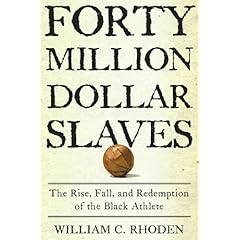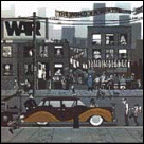Here is some interesting research on
Race and Violent Crime. For those of you who have never read this piece, I thought you may find it interesting reading. Please let me know what you think.
AAPP
 Race and Violent Crime -- What's the Connection?
Race and Violent Crime -- What's the Connection?
Source: National Institute of Justice
Liberals often blame crime in black ghettos on poverty, while some conservatives point to the high number of single-parent households. A sociologist argues for the more complicated position that poverty leads to broken families, then crime.
In the United States, black urban communities have more of what sociologists term "social dislocations" than do other racial or ethnic communities, says sociologist Robert Sampson. These dislocations include drug addiction, welfare dependency, and violent crime, as well as "family disruptions" like teenage pregnancy, out-of-wedlock births, and female-headed households. The rate of violence is emblematic of the social pathology that plagues the black urban ghetto. Blacks, 11% of the population, comprise 61% of robbery arrests and 55% of homicide arrests. Black males have a 1-in-21 chance of being murdered.
Past Research on Race and Crime
Sampson argues that previous research does not adequately explain the links between race, violent crime, and other social dislocations. Specifically, the relationship between crime and family structure in black urban communities is poorly understood, he says. Why?
-
In part, Sampson argues that this is because sociologists have tended to shy away from studies that might be interpreted as reinforcing racial stereotypes. This fear of be labeled a racist followed the attack on work by scholars such as Rainwater ("Crucible of Identity," 1966) and Moynihan (The Negro Family, 1965).
-
In addition, what research has been done has tended to ignore the role of structural factors -- like the rate of black male joblessness -- in producing both crime and broken families, Sampson says. Studies of the black family concentrate on how liberal welfare policy influences family disruption. Studies of crime look at individual factors or propose that crime in urban ghettos is caused by a black subculture of violence, "a value system that condones and legitimates violence."
- Sampson says that it also has been difficult to get good comparative data to test how structural factors influence a variety of social dislocations, including crime. Race-specific crime and arrest rates have not been reported by city or by other units that would allow researchers to investigate how crime rates vary along with other structural differences -- like income, rates of drug addiction, the number of female-headed households, etc.
Sampson argues that the problems in past research have placed real limits on our understanding of the links between crime, race, and other social problems. And our ignorance has affected both policy and public opinion, he says. Racial stereotypes persist. Black males are incarcerated at increasing rates, but crime persists.
Sampson's Model
Sampson's own research is designed to assess the structural links between black crime, family disruption, and structural factors like poverty and joblessness. This research offers a critique of existing explanations of the social dislocations in black communities that place blame with individuals or black subculture. Sampson contends that there is much support for William Julius Wilson's theory that structural factors -- poverty, joblessness -- are linked both to family structure and to crime. His analysis shows that the rates at which blacks commit robbery and homicide are strongly influenced by family structure. This is particularly true for juveniles. Furthermore, breakdown in family structure (measured by the percentage of black households headed by a woman) is caused in large part by low income and male unemployment.

Sampson Rejects Subculture of Violence
Sampson concludes that this structural explanation of crime is valid for both black and white populations of urban areas, pointing strongly to a conclusion that black crime cannot be attributed to some unique elements of black culture. He rejects the black "subculture of violence" argument about the causes of black crime. He also argues that his research explains why unemployment and economic deprivation have shown no direct relationship to crime rates in previous studies. These factors operate indirectly by causing black family disruption, and that leads to more crime.
Reduce Crime By Providing Resources for Stronger Families
Based on his research, Sampson suggests that social policies should be designed to retool unskilled workers, provide job supports, and address family policy issues -- such as the hardships faced by single mothers. Such programs "are more likely to reduce family disruption and crime in the long run than are current policies aimed simply at reducing welfare and incarcerating an ever-increasing proportion of the black population," Sampson says.
- Research Design:
-
Sampson designed his study to assess the "overall effect of an area's rate of marital and family disruption on both juvenile and adult crime." He used data from the 1980 census (U.S. Bureau of the Census, data tapes STF3) to create statistical variables for key characteristics of white and black populations of the 171 cities in the United States with populations over 100,000. The variables were
- male marriage pool index (MMPI), or the number of employed men per 100 women;
- percentage of households headed solely by a woman; percentage of households with children under 18 headed by a woman;
- per capita income, or income per person;
- the average welfare payment to families on welfare; and
- median age of the population.
Sampson also used census data to obtain the following information about each city: region, racial composition, population size, and housing density (measured by the percentage of rental housing units located in buildings with five or more units).
Sampson obtained data from the FBI on arrest counts for each police jurisdiction of the 171 cities for the years 1980-1982. These data were merged with the census files. From these data he obtained offending rates, or age- and race-specific rates of robberies and homicides.
The sample size for homicide was reduced to 153 cities because some data were missing in the FBI database. Sampson emphasizes that there is no reason to think that the data are racially biased.
This research was funded by the National Institute of Justice.
Citation: This Keytext reports some of the ideas and findings from the following source:
Sampson, R. J. (1987). Urban black violence: The effect of male joblessness and family disruption. American Journal of Sociology, 93, 348-382. Pp. 348-82
To see other key texts that originated from this same citation, click here.
Authors:
Robert J. Sampson








































![[npr_newsnotes.jpg]](https://blogger.googleusercontent.com/img/b/R29vZ2xl/AVvXsEjrutmUkZxwkFeBaRIQmhH5IjbSRus-kQEYwA_IbtQXARIcnJdZsw0tyuY63HLYZjQM-YtcE3niv6L_w73Bm9UQIrLrhurYZVxJP1HiHSpgUPM0xzBPZJIYjmSA06qU1uO9sjgFkTMkWjA/s1600/npr_newsnotes.jpg)



